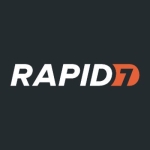What is our primary use case?
We're using it to manage devices on the network. We get real-time incident reports on changes done on the servers and changes on routers and switches. They also use it to provide reports to management on activities, incidents, and events.
What is most valuable?
I like the reporting model where you can drill-down capabilities into user actions on the network.
I also like CMDB. The CMDB captures devices as long as they have SNMP enabled. It captures the information for me.
What needs improvement?
Sometimes, if there are changes made by a user on a database server, it can be difficult to get that information on the fly. I would like to see a situation where once I specify a user with the database server I need, and with the changes they have performed on that, I don't need to continue my search pattern to drill down just to get the information.
When you're generating a report on the report line, sometimes it is very important to understand the criteria for creating the database to get the report you want. If FortiSIEM can improve on that, the user is looking for specific information, and it comes by. You don't need a technical person to generate a report. It's a bit difficult for you to generate it without drilling down. You need to keep clicking, and narrowing down your search to get what you want.
If there will be some level of info, I like the reporting on FortiAnalyzer because one can see the number of people consuming bandwidth on the network, who the top users are, at the critical button you specified, and how long the duration is. FortiSIEM is not as easy.
For how long have I used the solution?
I have been using it for three years. I currently use the version 6.3.
What do I think about the stability of the solution?
It is a stable solution. So far, it's been relatively stable. The current version we're using will expire in 2024, so we're planning to upgrade to the next version soon. We're also considering moving to the cloud, which may impact stability, but we'll have to see how that goes.
What do I think about the scalability of the solution?
It is a scalable solution on-prem environment. We will be testing the scalability when we migrate to the cloud.
We have between 300 and 400 users. There are three administrators on the system who manage devices for 25 EPS and close to 100 EPS. We are only licensed for 200 EPS, but we have plans to increase the number of users.
How are customer service and support?
The customer service and support have been helpful. We log in the case, they come back to us, and then we resolve it.
Which solution did I use previously and why did I switch?
We were using Check Point before we migrated to FortiSIEM. We used Check Point for about ten years before we moved to FortiGate.
So, we switched to Fortinet from Check Point. There were two main reasons. First, we weren't getting the support we needed from Check Point. Second, the cost of renewing support for our end-of-life devices was too high. We had a limited budget, so we looked for a solution that could give us the same features and capacity as Check Point at a more competitive price. We opted for FortiSIEM because it met both of our requirements.
How was the initial setup?
The initial setup was straightforward because Fortinet had already provisioned the appliance. We added it to our VM and finished up by configuring the key. The only bit where there was a bit of a problem was when we started because it was supposed to be a three-in-one appliance, but we noticed that we needed to separate the collector in a different location. Otherwise, it's a straightforward process.
My understanding of a three-in-one appliance is that both the collector and the other components have to be in the same box. However, there was certain information that we were not getting, and I understand that this was changed in the 6.3 version, where the collector is separate.
This makes it easier to use agentless apps, because with agentless apps, the information is now sent back to the collector if it is separate from the other components. So, we now have to start making changes to the Kapolei collector with storage and all that. I think it's still pretty straightforward though.
What about the implementation team?
We used a consultant for the deployment because it was a new product, and we wanted to ensure that it was done correctly. However, it is possible to deploy Fortinet FortiSIEM in-house by following the deployment guide.
The deployment took one week to deploy Fortinet FortiSIEM, excluding the time it took to acquire the necessary servers and virtual machines.
The first step was to purchase the necessary servers and virtual machines. We also needed to upgrade our VM version from 5 to 7.X. Once we had all of the necessary hardware and software in place, we were able to begin the deployment process.
We have five managers overseeing IT, internal control, and corporate. The staffing needs depend on their specific roles. The ID team provides the necessary support to ensure the application runs smoothly. Control users are in place to ensure that changes are made with proper information, and any alterations require approval. For these tasks, we have approximately five admins managing the process.
What's my experience with pricing, setup cost, and licensing?
We pay for a license for FortiSIEM. We pay for the license and renewal.
It is expensive. The initial cost was almost prohibitive, but we went with it because it was a recommendation from our recruiters. Otherwise, we probably wouldn't have done it because it was expensive.
What other advice do I have?
Overall, I would rate the solution a nine out of ten. It's easy to manage. There's a web interface and a command line, depending on what the user is comfortable with. There's a large knowledge base available, and the support is timely. I've been using FortiSIEM for about two years and FortiGate for about ten years, and I would recommend FortiSIEM to people who are interested in running next-generation firewalls.
Disclosure: My company does not have a business relationship with this vendor other than being a customer.





















